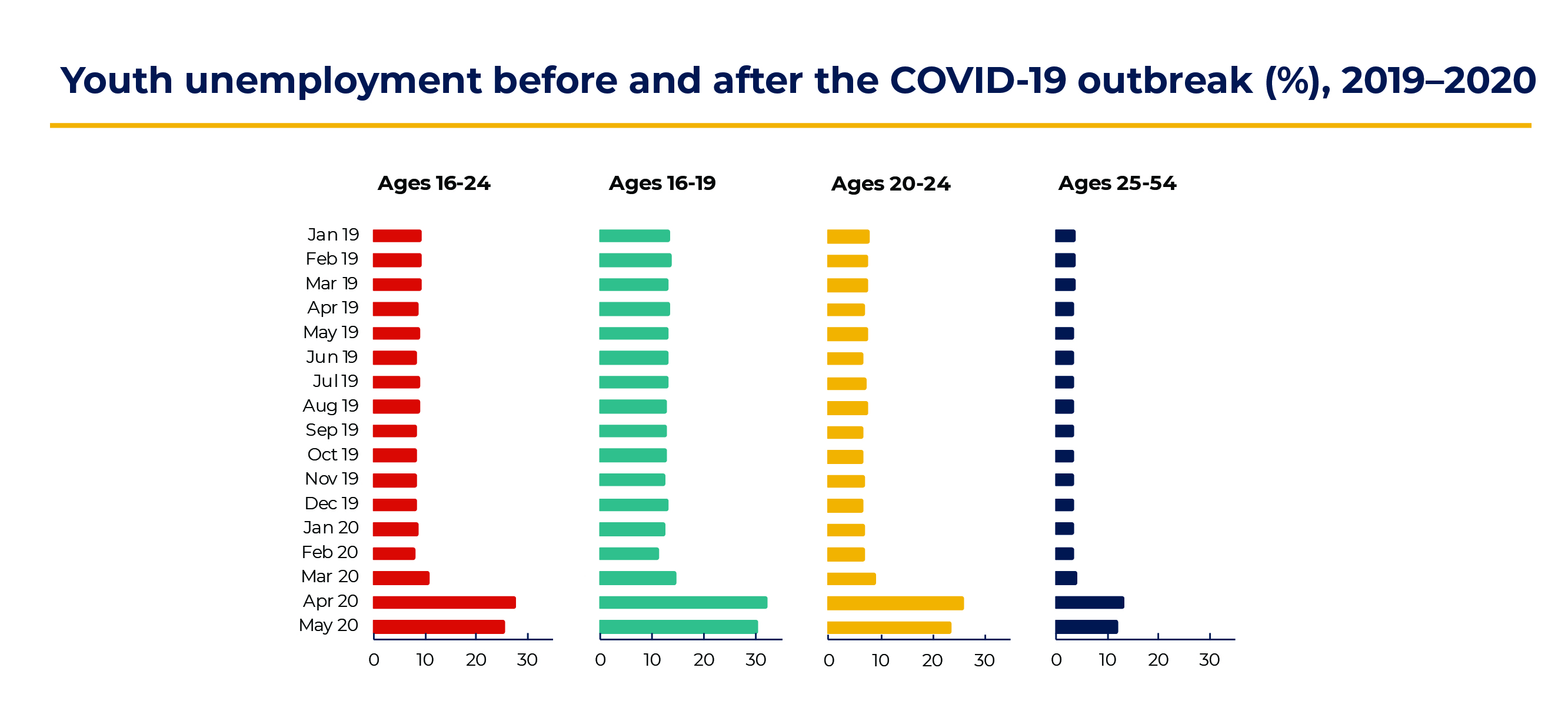Today Mathematica released Breaking Down the Numbers: What Does COVID-19 Mean for Youth Unemployment?, a report analyzing youth unemployment data in the United States in 2019—before the COVID-19 pandemic—and in the first five months of 2020—when the pandemic began and accelerated. The report, funded by the Schultz Family Foundation, found that the pandemic led to a stark shift in youth unemployment in early 2020. In just a few months, the gains made to decrease youth unemployment over the past decade have reversed, posing several challenges that might exacerbate youth’s economic vulnerability in the coming years.
The data show that more than a quarter of young people were jobless within a month after most states implemented stay-at-home policies—32% of youth ages 16-19 and 26% of youth ages 20-24 were unemployed. In May 2020, the unemployment rate decreased slightly, but a quarter of young people between the ages of 16-24 were still unemployed. Adult unemployment increased as well, but there remains a persistent gap between youth and adult unemployment numbers. In 2010, youth unemployment (for ages 16-24) was 2.1 times higher than unemployment among prime-age workers. In 2019, this gap increased to 2.7 times, although unemployment decreased for both groups. In the wake of COVID-19, that trend continues – youth unemployment is more than twice as high as adult unemployment.
Extended stretches of unemployment can have long-term adverse economic effects for young people, resulting in lower earnings and increased risk of unemployment later in life, which leads to further depreciation of labor market skills. Consequently, young people may face increased risk of poverty and experience barriers to transition into adulthood and family life. Even during strong labor markets, youth are economically more vulnerable because they tend to work in seasonal, casual, temporary, or part-time jobs, often without paid leave and benefits.
“A meaningful job provides a sense of purpose and sets a young person on a path to economic mobility. Unfortunately, the COVID-19 crisis has had a devastating impact on youth employment,” said Sheri Schultz, president of the Schultz Family Foundation. “To truly comprehend the scale and nature of the problems facing young people in the workforce today, we need timely data like this to inform our work to serve the most vulnerable youth.
Close monitoring of timely and detailed data on youth unemployment is critical to identifying vulnerable communities, targeting programmatic resources more efficiently, and tracking progress. Providing monthly youth unemployment data by gender, race and ethnicity breakdowns, and at the metro- and state-level, can help policymakers better allocate resources to tackle youth unemployment among the hardest-hit groups and communities.
The report also finds that the pandemic has differentially affected youth unemployment rates by gender, race and ethnicity. Before the COVID-19 crisis, the unemployment rate among young people was the highest for African American youth, followed by male youth and Hispanic youth. When the pandemic hit, however, the youth unemployment rate climbed sharply for all groups.
“As this summer is beginning to show, this pandemic could further exacerbate the economic, health, and educational disparities of African American youth, who face not only limited opportunities for meaningful and well-paying jobs but also persistent structural racism in communities and institutions,” said report author, Hande Inanc.
View the full report and companion blog post.


